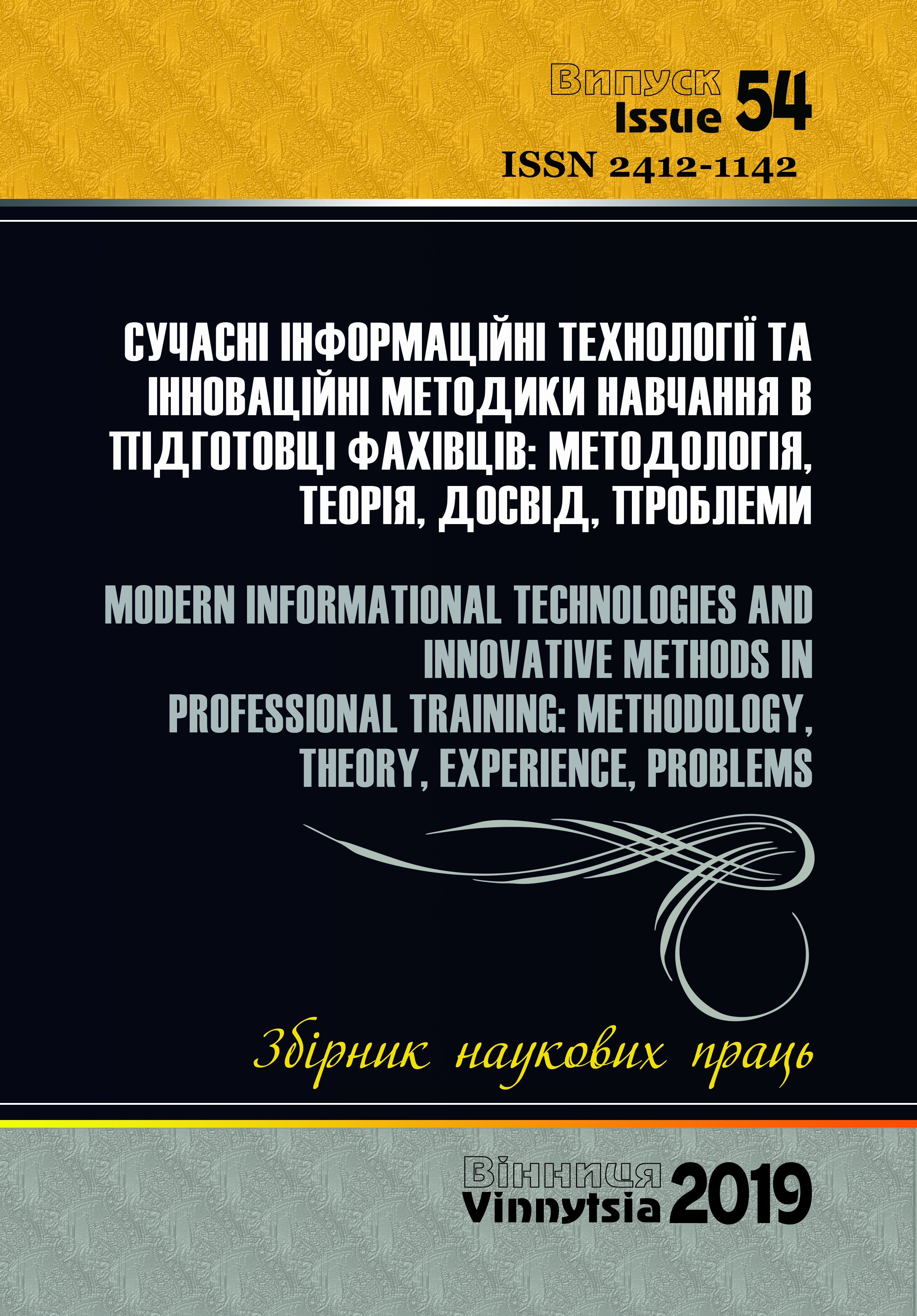ELECTRONIC MEANS OF TRANSLATION IN THE INFORMATION SUPPORT SYSTEM OF LANGUAGE DIDACTIC PROCESS: ROLE, EXTENSION, FUNCTIONAL
DOI:
https://doi.org/10.31652/2412-1142-2019-54-144-147Keywords:
computer-aided translation, electronic means of translation, information provisions, linguo-didactic process, classroom practices, e-dictionary, paperback dictionary, functionalityAbstract
Electronic Means of Translation in the System of Information Provisions of the Linguo-didactic
Process: Significance, Prevalence, and Functionality
The article addresses the issue of upgrading information provisions of foreign language teaching / learning by
means of further introduction of computer-based translation tools, particularly e-dictionaries. The authors claim that electronic means of translation have the potential for reshaping classroom practices due to their advanced and user-
friendly functionality. It is highlighted that the efficient use of machine-aided translation tools calls for developing
comprehensive methods of their usage by both teachers and learners.
The authors trace back the establishing of this kind of technology. Although the history of machine-aided
translation dates back to the mid-nineteenth century, it is only the 1990s that saw its wide spread occurrence. It was a
major move taking into account the fact that in the 1970s and 1980s machine-aided translation was considered
unprofitable.
Among others the authors analyse essential features of various tools of computer-aided translation, which serve
the basis for working out comprehensive classifications of the latter. Special attention was given to the history of
developing e-dictionaries as well as their advantages over their paperback counterparts.
The article contains references to particular items of software, the usage of which has the potential for
facilitating foreign language teaching / learning process.
Downloads
References
Заваруева И. И. Об одной возможности классификации электронных словарей / И. И. Заваруева // Вісник Харківського національного університету імені В. Н. Каразіна. Серія філологія. Вип. 50. – Харків, 2007. – No 765. – С. 67-70.
Сравнительная характеристика электронных и бумажных словарей в функциональном аспекте. – [Електронний ресурс]. – Режим доступу: http://cyberleninka.ru/article/n/sravnitelnaya-harakteristika-elektronnyh-i-bumazhnyh-slovarey-v-funktsionalnom-aspekte
Crystal 1986: 81; Crystal, D.1986. ‘The ideal dictionary, lexicographer and user’ in R. F. Ilson (ed.), 72-81.
Electronic Dictionaries in Second Language Comprehension. – [Електронний ресурс]. – Режим доступу:
Nesi 2000b: 839; Nesi, H. 2000. ‘Electronic Dictionaries in Second Language Vocabulary Comprehension and Acquisition: the State of the Art’ in U. Heid et al. (eds.), 839-847.
Downloads
Published
Issue
Section
License
Copyright (c) 2020 О.М. Яцишин, Ю.О. Бардашевська

This work is licensed under a Creative Commons Attribution 4.0 International License.

